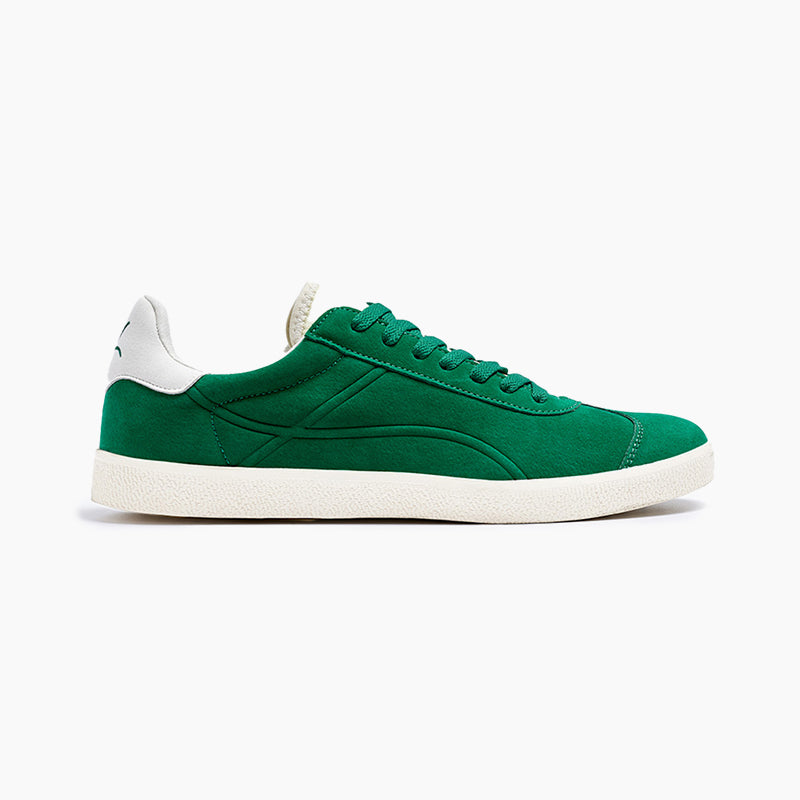What is the Sole of a Shoe? A Complete Guide for Beginners

What is the sole of a shoe? It’s a simple question with a surprisingly big impact especially when comfort, quality, and style matter. The sole of a shoe is the part that supports every step you take, offering grip, cushioning, and structure from the ground up.
At Ludic, we believe great design starts with thoughtful construction. Our footwear isn’t performance-driven it’s built for everyday ease, subtle elegance, and effortless movement. As the official footwear partner of Chennai Super Kings (CSK) for the 2025-26 season, we bring that same energy to our soles where comfort meets minimal, modern design.
This guide will walk you through everything you need to know about the bottom of a shoe, from materials and construction to how to choose what suits your lifestyle best.
What is the Sole of a Shoe?
The sole of a shoe is the bottom part that comes in direct contact with the ground. It’s what separates your foot from whatever surface you're walking, running, or standing on. A good sole does more than offer grip; it provides comfort, flexibility, and protection.
There are usually three main components in the sole:
-
Outsole: The very bottom part that touches the ground.
-
Midsole: The cushiony layer in the middle that absorbs shock.
-
Insole: The part inside the shoe that your foot rests on.
Each layer plays a unique role in offering support, comfort, and stability.
Why Is the Sole So Important?
The sole of a shoe is like the foundation of a house. If it's not built well, everything else falls apart. Here's why soles matter:
-
Support: A good sole keeps your posture aligned and reduces strain on your feet and joints.
-
Cushioning: It protects your feet from the impact of walking or running.
-
Grip: Prevents slipping and helps you move confidently on any surface.
-
Durability: A high-quality sole ensures your shoes last longer.
Types of Shoe Sole Material
Now that you know how important the sole is, let’s look at the types of shoe sole material commonly used. Each has its feel, purpose, and advantages.
1. Rubber
One of the most common materials. It’s known for:
-
High durability
-
Excellent grip
-
Water resistance
Perfect for sneakers, trainers, and everyday wear.
2. EVA (Ethylene Vinyl Acetate)
Lightweight and flexible, EVA soles offer:
-
Shock absorption
-
Light cushioning
-
Comfortable to wear for long hours
Often used in running shoes or casual trainers.
3. PU (Polyurethane)
PU soles are:
-
Durable
-
Flexible
-
Lightweight and resistant to wear
Great for both casual and formal shoes.
4. Leather
It is found mostly in dress shoes, leather soles offer:
-
Elegant appeal
-
Breathability
-
Custom-fit over time.
However, they may not provide the same grip as rubber or synthetic soles.
5. TPR (Thermoplastic Rubber)
- A mix of rubber and plastic, TPR soles are:
-
Cost-effective
-
Flexible
-
Water-resistant
Ideal for budget-friendly, fashion-forward shoes.
Shoe Sole Types Based on Design
Understanding the shoe sole types also includes looking at design features. Here are some popular ones:
1. Flat Sole
-
Common in sandals and some casual sneakers.
-
Offers minimal arch support.
-
Ideal for short-term wear or for people with flat feet.
2. Lugged Sole
-
Chunky and patterned for better grip.
-
Perfect for hiking or rough terrain.
-
Adds a rugged style element.
3. Cup Sole
-
A rubber outsole "cups" the upper part of the shoe.
-
More rigid and supportive.
-
Common in skate shoes and sneakers.
4. Split Sole
-
Seen in dance shoes.
-
Offers flexibility and allows the foot to move freely.
5. Wedge Sole
-
A single piece running from heel to toe.
-
Provides extra lift and support.
-
Often used in boots and slip-ons.
How to Choose the Best Sole Material for Shoes
Looking for the best sole material for shoes? Here are some tips to help you choose the right one based on your needs:
For Daily Wear
Go for rubber or EVA soles. They are soft, durable, and provide excellent comfort.
For Sports or Active Use
EVA midsoles combined with a rubber outsole give the best performance, cushioning, and grip.
For Office or Formal Settings
Leather or PU soles offer a sleek look with decent support.
For Outdoor or Trekking
Lugged rubber soles with TPR or PU material provide stability and traction on uneven ground.
How to Take Care of the Sole of a Shoe
To make your shoes last longer, caring for the sole is key. Here’s how:
-
Clean Regularly: Wipe off dirt or mud to avoid build-up.
-
Avoid Excess Moisture: Store shoes in a dry area to prevent damage to the sole.
-
Use a Shoe Tree: This helps maintain the shape and reduces wear on the inner sole.
-
Resole When Needed: For high-quality shoes, replacing the sole can extend life without sacrificing comfort.
Common Signs Your Sole Needs Replacing
It’s easy to forget the condition of your soles until it's too late. Watch out for these signs:
-
Uneven wear and tear
-
Slippery grip on smooth surfaces
-
Cracks or separation from the shoe body
-
Reduced cushioning or comfort
If you spot any of these, it might be time for a new pair or a visit to your cobbler.
Fun Facts About the Sole of a Shoe
-
The oldest known shoe (about 5,500 years old) had a leather sole!
-
Some soles are made using recycled materials to support sustainability.
-
Sneaker soles can contain air pockets, gels, or even carbon plates for athletic performance.
Why Ludic Focuses on the Sole
At Ludic, every pair of shoes begins with one question: how can we make this feel better underfoot without compromising on style? That’s why the sole of a shoe plays such a big role in our designs.
Our collection isn’t built for high-performance sports it’s made for your daily rhythm. Whether you’re heading to a brunch, walking through a creative workspace, or enjoying a laid-back evening, Ludic’s soles combine lightweight comfort, soft cushioning, and refined silhouettes. We use premium materials like EVA and PU to create that "barely-there" feel with lasting durability.
As the official footwear partner of CSK for the 2025-26 season, we bring the same attention to comfort and thoughtful design to every collection making sure each step you take looks as good as it feels.
Explore our collection at Ludic to find styles that align with your pace crafted for comfort, shaped by simplicity.
Final Thoughts
So, what is the sole of a shoe? It’s more than just the bottom of your footwear. It’s the backbone of comfort, the secret to long-lasting wear, and the unsung hero of every step you take. From types of shoe sole material to shoe sole types, now you know how to choose the right one based on your lifestyle and preferences.
Your sole matters, and with Ludic, you're always walking on the best.
FAQs about What is the Sole of a Shoe
1. What is the sole of a shoe made of?
The sole of a shoe is typically made of materials like rubber, EVA, PU, or leather. These materials offer durability, cushioning, and grip depending on the shoe’s purpose.
2. What is the sole of a shoe called?
The sole of a shoe refers to the bottom part and is divided into the insole, midsole, and outsole. Together, (insole, midsole, and outsole provide comfort, support, and protection for your feet.
3. What is the sole of a shoe used for?
The sole of a shoe is used to support your foot, absorb shock, and give traction on different surfaces. It also plays a key role in how the shoe feels and performs.
4. What is the sole of a shoe used for in lifestyle footwear?
In lifestyle shoes, the sole of a shoe is designed to offer all-day comfort, support, and smooth walking. For brands like Ludic, it's also about pairing function with stylish, minimal design.
5. What is the best material for the sole of a shoe?
The best material for the sole of a shoe depends on usage: rubber for grip, EVA for cushioning, and leather for formal wear. Each material serves a different need.


































